Recently we provided a few bottle-feeding tips in our story about actress and breast cancer survivor Christina Applegate. Not all moms can breastfeed, so it’s important to remember that lots of skin-to-skin contact, baby-wearing, feeding on cue, and the use of donor milk (if possible) can make for a healthier feeding experience. We’re pleased to be able to give you further information on successful bottle-feeding, courtesy of Amy Peterson, BS, IBCLC and Mindy Harmer, MA CCC-SLP. Amy and Mindy have co-authored Balancing Breast and Bottle: Reaching Your Breastfeeding Goals. While written primarily for breastfeeding mothers, Balancing Breast and Bottle contains practical information to help all mothers—whether they feed breastmilk, donor milk or formula— select a bottle nipple or pacifier for their baby. (For moms that are also breastfeeding, this information can help transition back and forth between breast and bottle, once breastfeeding has been successfully established, usually after 2-6 weeks.) The authors developed an acronym called the SIMPLE Method that explains how to select an appropriate nipple according to a baby’s unique suck. One chapter details common sucking difficulties with bottle nipples, and how to achieve better mouth placement and coordinated swallowing. The book also contains an appendix which ranks common nipple brands from slowest to fastest slow-flow nipple, something that is sorely missing elsewhere! To learn more, visit http://www.breastandbottlefeeding.com.
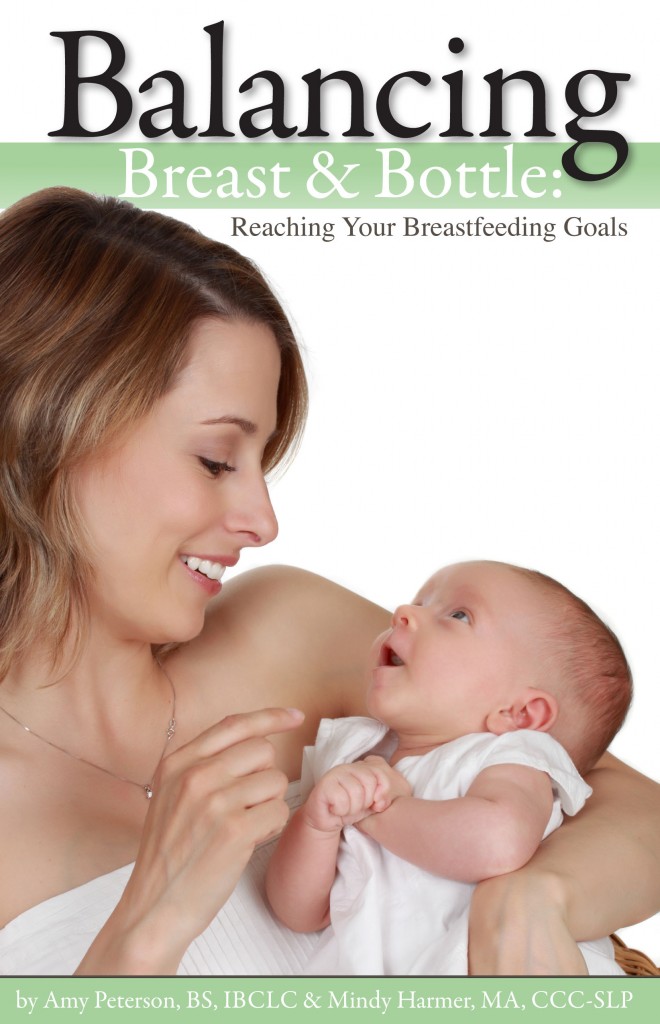 Bottle-feed as You’d Breastfeed
Bottle-feed as You’d Breastfeed
by Amy Peterson, BS, IBCLC, and Mindy Harmer, MA, CCC-SLP
Feeding our babies is an important part of parenting. We feed our babies many times each day. Each feeding provides an opportunity for loving interaction. Breastfeeding—literally feeding the baby at the breast—intimately connects a mother and baby, and also models natural feeding. However, there may be times when a baby doesn’t feed at the breast. In these situations, we can apply the elements of breastfeeding to bottle-feeding to ensure all feedings are nurturing and mimic “normal.”
Baby Milk
First, carefully choose your baby’s milk. At the breast, babies drink breastmilk. Ideally, then, breastmilk will also be in the bottle for every feeding. This usually requires a mother to pump her milk with a high quality breast pump and save it. Provide your breastmilk exclusively for as long as possible.
Sometimes a mother may not have enough breastmilk saved to use in a bottle.[1] “Sadly, some mothers give up breastfeeding at this point, thinking that the benefits of breastmilk are cancelled by adding formula. But this is not true; breastfeeding need not be ‘all or none’” (Peterson & Harmer, 2009, p. 20). Continuing to provide your breastmilk even when your baby also receives some formula is important for your baby. There are different ways to combine baby milk. It is safe to put breastmilk in a bottle and add formula to equal a full feeding. A different way to combine baby milk is to use all breastmilk for some feedings, and formula for others. These options may allow you to extend the length of time your baby receives your breastmilk.
Mouth Placement
In the early days of breastfeeding, mothers attend to their babies’ mouth placement for coordinated sucking and good milk transfer. Likewise, mothers need to attend to their babies’ mouth placement and coordination on a bottle. A bottle cannot and should not be chosen based simply on manufacturer’s claims. Rather, a baby’s mouth placement on a bottle needs to mimic a similar placement as on the breast—whether or not the baby ever breastfeeds.
Check your baby’s mouth placement on the nipple:
- Baby’s lips should seal on the nipple so that no milk is leaking
- Baby’s lips need to be on a portion of the nipple base AND baby’s lips should be rolled slightly outward. SEE PHOTOS!
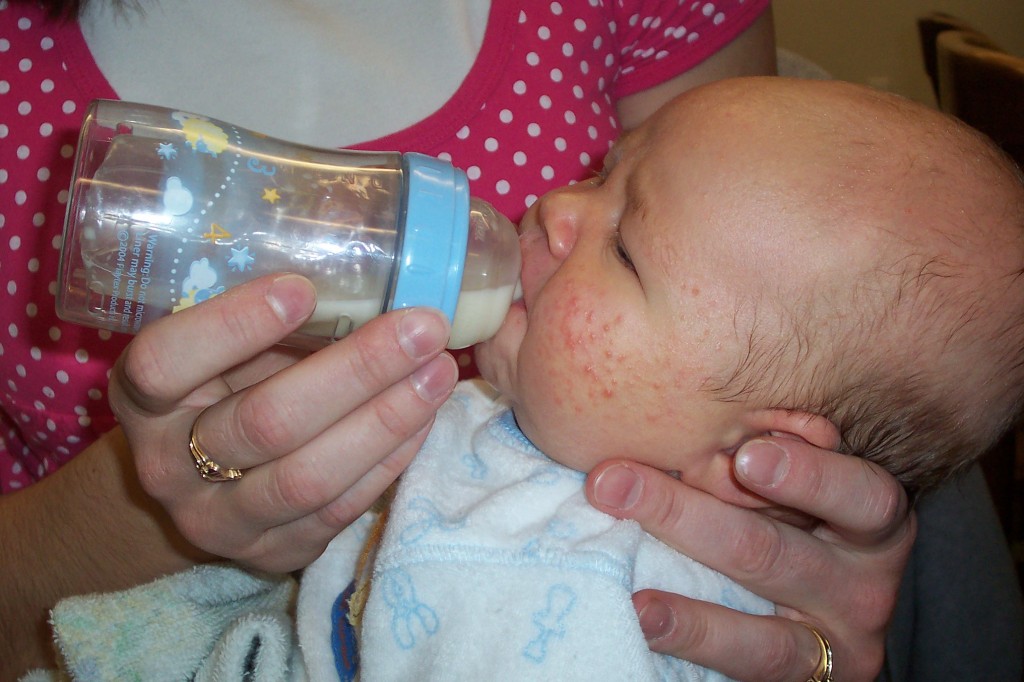
Lips not on a portion of the base. From Peterson & Harmer, 2009, p. 66. Used with permission from Hale Publishing.
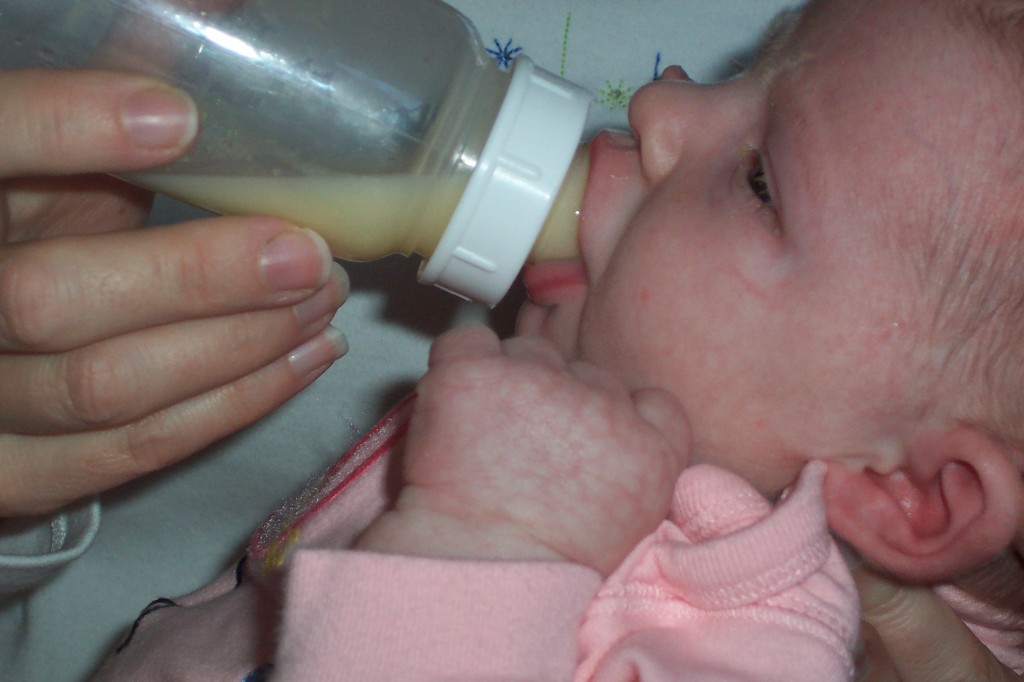
BEST: Lips on a portion of the base. From Peterson & Harmer, 2009, p. 58. Used with permission from Hale Publishing.
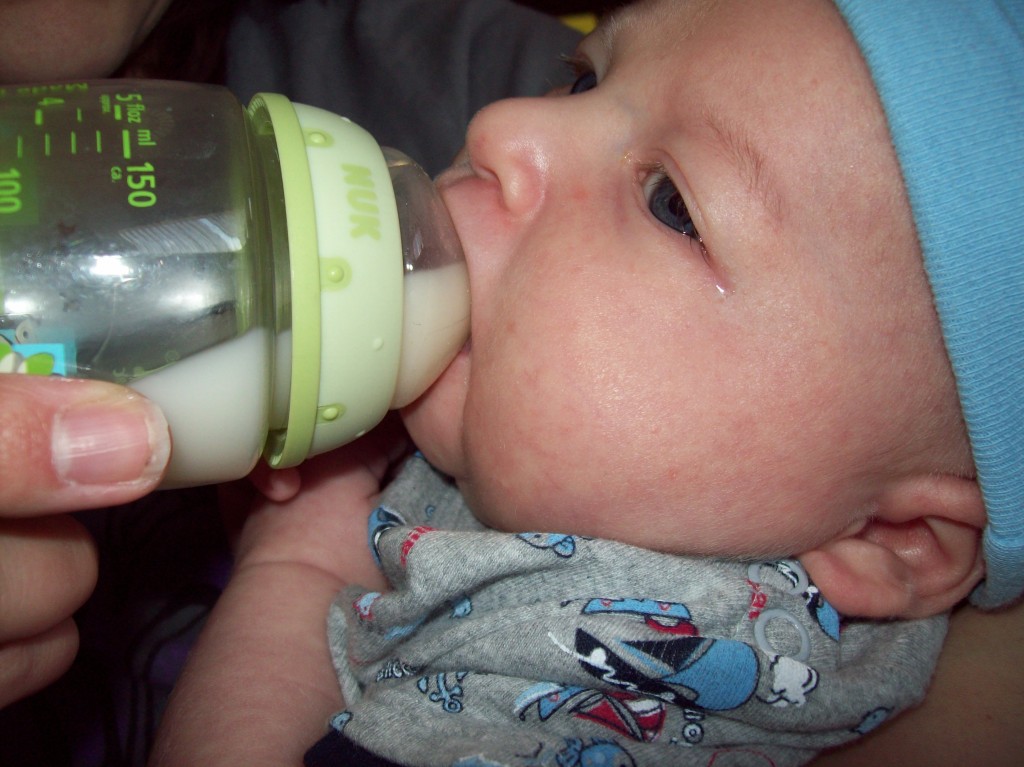
Bottom lip rolled IN. From Peterson & Harmer, 2009, p. 71. Used with permission from Hale Publishing.
Swallowing
Bottle nipples have various rates of flow. The flow of a nipple will affect the coordination of a baby’s swallow. Young babies need to start with a “slow” or “newborn” nipple, but even so, there is a wide range of how fast these slow nipples flow. It is important to observe your baby’s behaviors when bottle-feeding to determine if the flow is hindering your baby’s swallowing.
Check your baby’s swallowing when using a bottle:
- Baby’s swallows should be rhythmic—swallowing after every one or two sucks
- Baby will not choke, gulp, or gag
- Baby will naturally pause and rest after 15-20 swallows
- Bottle-feedings will usually take 10-15 minutes; faster is not better
- Baby will look relaxed while feeding
Improving the Bottle-Feeding Experience
There are other elements of breastfeeding that can be applied to bottle-feeding:
- Just as breastfed babies switch feeding sides throughout the day, bottle-fed babies can, too. Try to switch directions your baby feeds at least a couple times throughout the day.
- Breastfed babies always feed with their moms—obviously! Never allow your baby’s feedings to be isolated, or prop a bottle. Feedings are a time of interaction where your baby can focus on you and practice communicating.[2]
- If you plan to return to work at some point, let your baby practice bottle-feeding with another caregiver. Just as breastfed babies may prefer their mom and be reluctant to take a bottle at daycare, bottle-fed babies can, too, particularly when the baby has only received bottles from his mother.
Peterson, A., & Harmer, M. (2009). Balancing Breast & Bottle: Reaching Your Breastfeeding Goals. Amarillo, TX: Hale Publishing.
Best for Babes Editor Notes:[1]A major barrier is that many women are being falsely led to believe that they cannot breastfeed or cannot make enough milk. We suggest that you get to the bottom of any breastfeeding difficulties because too many women blame themselves erroneously when they were truly prevented from succeeding, and finding out the cause of an inability or decreased ability to breastfeed can be liberating and healing. We recommend you see an excellent IBCLC. For more information about low milk supply, see lowmilksupply.org.[2] Some mothers practice bottle-feeding while baby-wearing (using a sling or baby carrier), or even use a bottle-holder contraption so that they can feed the baby and have one hand free. We do not recommend these practices with a newborn because it is easy to be distracted and not notice if the baby is feeding properly (i.e. getting enough milk, not choking, etc.).
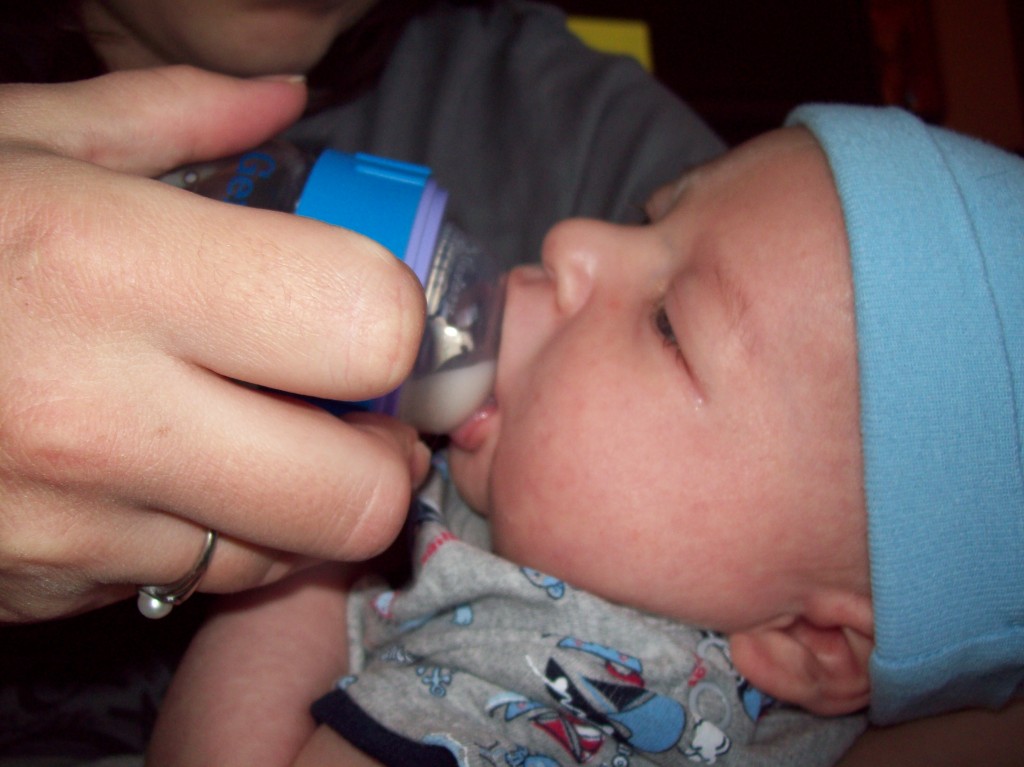
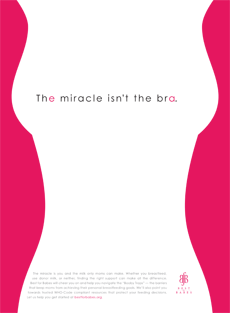
 @BestforBabes
@BestforBabes Best For Babes
Best For Babes

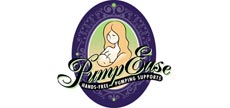




I read Applegate’s People magazine interview and feel so much empathy for her. Though, when she said that she couldn’t breastfeed I wish she had known about using a Supplemental Nursing System. She, and other moms who need to use formula or donated milk, can breastfeed even if they don’t make milk. I’d love for your article to address the other choice for formula feeding…utilizing a Supplemental Nursing System. It’s a great choice for moms who can’t make milk and adoptive moms as well.
Thank you, Liz, for mentioning the SNS. The Supplemental Nursing System is just one option. There is also the Lact-Aid, which has been on the market longer and utilizes a bag for the milk and one tube, rather than a rigid bottle and two tubes. Another option can be seen on Dr. Jack Newman’s website, an apparatus made simply from a feeding bottle and an NG tube. As a paediatrician, he uses this in his clinic, and also advises moms in using it at home when it is needed more longterm. Chele Marmet, years ago, made one using what amounted to a vacuum 4 oz bottle bag holder with the NG tubing pulled through the underside of the nipple to form a system that wouldn’t leak when laid on it’s side. Any woman needing to supplement can choose from a range of options with the support of her health care provider and IBCLC.